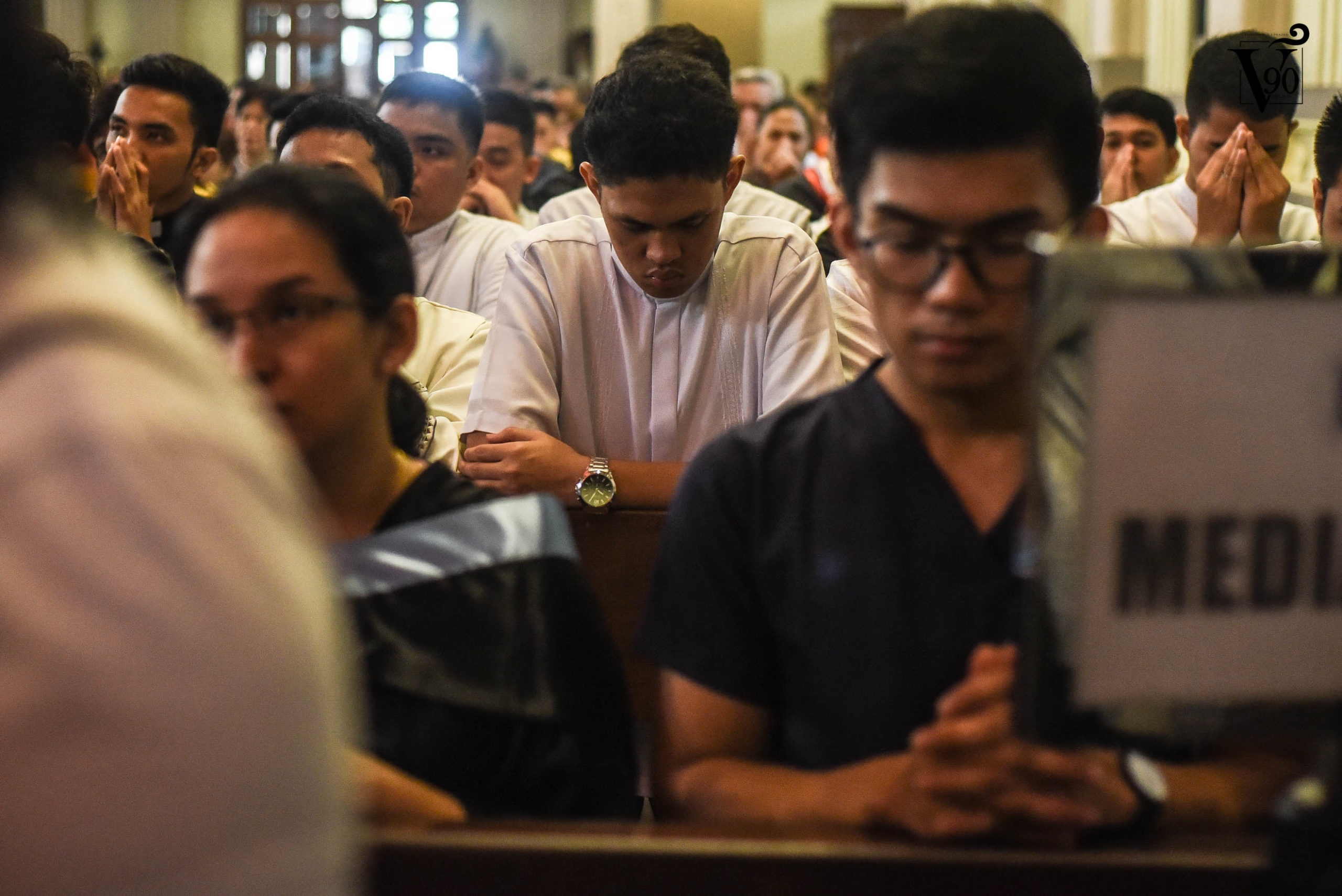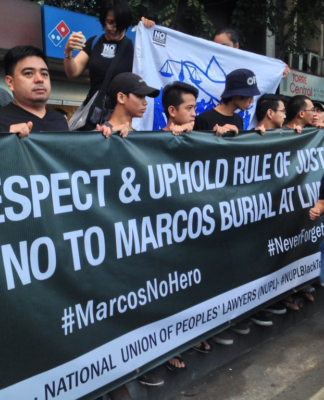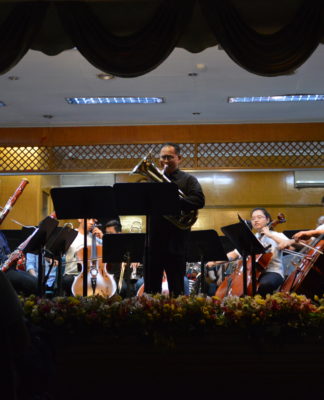 JAN. 28, 1920—Philippine fashion almost lost a prolific daughter when fashion designer Salvacion Lim Higgins nearly died at birth. She was, in fact, pronounced dead minutes afterward.
JAN. 28, 1920—Philippine fashion almost lost a prolific daughter when fashion designer Salvacion Lim Higgins nearly died at birth. She was, in fact, pronounced dead minutes afterward.
But thanks to a Chinese relative, Salvacion was saved and was to live 70 more fruitful years, most of which were dedicated to the superb craftsmanship and sophistication of the Philippine vogue.
“Slim,” as Salvacion would later be known, was the founder in 1960 of Slim’s Fashion & Arts School, the first and oldest fashion school in the country.
A UST fine arts alumna, Slim established the school along with older sister Purificacion, who would later play a key role in her journey. Now on its 50th anniversary, the school has been a powerhouse for some of today’s premier designers such as Oskar Peralta, Cesar Gaupo, Bobby Novenario, and Eddie Ocampo, to name a few.
Slim’s memoirs and gala of creations are showcased in a biography titled SLIM: Salvacion Lim Higgins, Philippine Haute Couture 1947-1990 (Slim’s Legacy Project, Inc., 2009) authored by her children, Mark Lewis and Sandra Louis Higgins with Lisa Guerrero Nakpil and photographer Neal Oshima.
Mentor and student
Peralta, the first Filipino designer to be published in Vogue Magazine in Paris, boasted of being one of the few students Slim mentored personally.
“There were lessons about proportions, sketching, and the color palette,” Peralta recalled. “But the best learning comes from experience. Having been taught personally by her, and being in the same fashion show with her would rank first in my [fondest memories of her].”
As a student still making a name for himself, Peralta recalled an instance when Slim urged him to change his name from “Oscar” to “Oskar” apparently for more sophistication.
“She was a mother to us, you can see in her workmanship her principles in life,” said Peralta, adding that their beloved teacher taught them more than just the right fabrics to use or the perfect colors to match.
“For her, every gown had its own story,” he said.
But like Peralta, Slim was once a student herself. A native of Legazpi City, she traveled in 1940 to Manila to study in the then UST Department of Architecture and Fine Arts, under the tutelage of National Artist Carlos “Botong” Francisco (who was said to have been “one of the first to notice Salvacion’s eye for color and declared it often enough to the rest of the class).”
“Nature and nurture” went hand-in-hand with the talented Slim, whose formal schooling only enhanced her keen eye for aesthetics.
Birth of ‘Slim’
Slim was enjoying learning art within the University, but this had to take the backseat when World War II broke out. Life grew harder when her father, businessman Don Luis Samson Lim Katiam had to leave his family for his own safety. Margarita Navera Diaz, the Lim matriarch, took over the household with seven children who would soon learn “gritty persistence at the knee of their mother.”
Slim was determined to continue her studies, following her brother Jose’s wedding in Manila. While waiting for the new school term to start, she sent sketches of her designs to the Manila Times, then the country’s most influential broadsheet. It was also then that she began to name herself “Slim.”
Thus, began the talented Salvacion’s journey of a thousand designs, with her exquisite creations as her golden ticket to the fashion industry.
With her designs getting fair attention, she put up an atelier with Purificacion and family friend Consuelo Barberan at a flat on the district of Malate in 1947, which soon moved to its last location in Taft Avenue. The shop enticed well-heeled clienteles and other members of the Filipino elite, due to Slim’s “fresh and trend-setting designs.” Among her patrons were Miss International Gemma Cruz-Araneta and Armi Kuusela, the world’s first Miss Universe.
Next level
After a string of successful local fashion shows, the premier couturier embarked with her friends on a trip to Paris in the 1950s, where they saw some of the biggest names in international fashion, including Christian Dior and Cristobal Balenciaga, among others.
Slim set off to New York and enrolled at the Traphagen School of Design, one of the first American institutions to offer advanced cutting and pattern-making. She returned to Manila in 1952 and was then asked to create Filipino costumes for actress Micheline Presle for the movie “An American Guerilla in the Philippines,” starring Tyrone Power.
Since then, Slim became one of the first Asian couturiers to appear in the American press. This kind of attention intensified when Slim created much of then First Lady Leonila Garcia’s wardrobe during her and President Carlos Garcia’s visit to the White House in 1958, as well as a nationalistic gown presented to former US First Lady Mamie Eisenhower. The gown is now part of a permanent collection at the Smithsonian Institution.
Already successful with her fast-paced career, Slim married businessman Hubert Lewis Higgins and consequently opened her fashion and arts school on Taft Avenue. Together with Purificacion, Slim worked on the school’s curriculum and other academic materials while she was pregnant with Mark Lewis.
Curtain call
Slim continued to revolutionize Philippine fashion until she reached the pinnacle of her career. But in 1984, she was dealt with a shocking revelation—she was diagnosed with cancer.
However, the persistent and highly professional Slim did not let her sickness get in the way and instead went about her routines as a designer.
In 1987, Slim received the Lifetime Achievement Award from the Filipino Designer’s Group for her contributions to the fashion industry. The following year, she moved to San Francisco and received treatment at the Stanford University Hospital.
In 1990, Philippine fashion lost her for good.
Philippine couture has never been the same since the passing of Slim, who revolutionized the era of ternos and stunning Filipinianas. But her true legacy lies not only in her creations, but in the succeeding generation of designers trained in her fashion school.
“I have found that it’s best to focus on one idea and build on that,” Slim once said. “Young designers sometimes tend to have a rush of clever ideas that they then cram into a single work, when these could have been divided into two, or even three, gowns.”
Slim was posthumously accorded the Hall of Fame Award at the 1990 Manila Fashion Designers Awards, which also showcased her last collections. In 1997, the quintessential designer was bestowed the Achievement Award at the Filipino Fashion Achievement Awards.
Last November, Slim’s body of works were exhibited at the National Museum of the Philippines. The exhibit runs until March this year. Included in the exhibit are yardsticks defined by the most explicit combinations of line, color and form, as well as gowns of elegant shapes and different fits. Her combinations of shades had a way of emphasizing the innate beauty of morenas, mestizas, and the occasional redhead complexions.
“She was the epitome of beauty in its simplest ways,” Peralta said. “Her gowns, even without the beadwork, would look astonishing and never plain.” M.R.B. Maranan

















